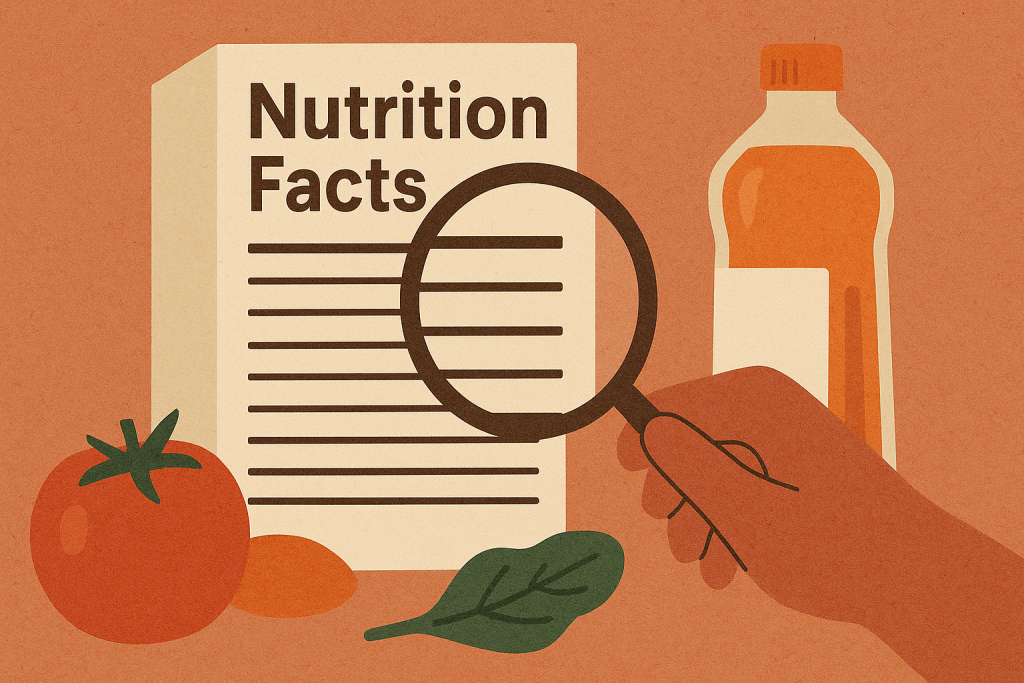
When it comes to eating healthier, one of the simplest yet most powerful tools at your disposal is the nutrition label on packaged foods. It’s like a mini cheat sheet to what you’re putting in your body—if you know how to read it right. But let’s be honest: with all those numbers, percentages, and scientific-sounding ingredients, it can feel like decoding a secret language.
In this article, we’ll break it all down so you can confidently make smarter food choices. Whether you’re trying to lose weight, manage a condition like diabetes, or simply live a healthier lifestyle, understanding nutrition labels is key.
Why Nutrition Labels Matter
Nutrition labels aren’t just a bunch of numbers printed on the back of a box. They’re a snapshot of a food’s nutritional profile and can help you:
- Compare products
- Monitor portion sizes
- Avoid excess sugar, sodium, or saturated fats
- Choose foods rich in nutrients like fiber, vitamins, and protein
Once you know how to read them, they empower you to take control of your diet rather than letting flashy marketing terms like “natural,” “low-fat,” or “gluten-free” influence your decisions.
The Anatomy of a Nutrition Label
Let’s start by breaking down the major sections of a typical U.S. nutrition label:
1. Serving Size and Servings Per Container
The first thing you’ll see is the serving size, usually listed in familiar household units (like cups or tablespoons), followed by the number of servings per container.
Why it matters:
Many people mistakenly think the nutritional values listed refer to the entire package—but they don’t. They refer to one serving. If a small bag of chips says the serving size is 1 oz and there are 3 servings in the bag, eating the whole thing means tripling all the values.
💡 Pro Tip: Always check if you’re eating one serving or the entire package. It makes a big difference.
2. Calories
Next up: calories. This tells you how much energy you’ll get from one serving of the food.
- Calories from fat used to be listed separately but have been removed in newer label formats.
- If you’re aiming for weight management, this is a key number to pay attention to.
But don’t let this number scare you—not all calories are created equal. 200 calories of almonds is vastly different from 200 calories of soda in terms of nutrition.
Follow our social media to get an daily update!
3. Macronutrients: Fats, Carbs, and Protein
This section shows the “big three” nutrients your body uses for energy.
Total Fat
Includes saturated fat and trans fat. Here’s what to know:
- Saturated Fat: Should be limited. Found in butter, cheese, red meat.
- Trans Fat: Avoid entirely if possible. It’s linked to heart disease and found in some processed foods.
Total Carbohydrate
Includes dietary fiber, total sugars, and added sugars.
- Fiber: Aim for high fiber. It’s great for digestion, heart health, and helps you feel full.
- Total Sugars: This includes both naturally occurring sugars (like those in fruit or milk) and added sugars.
- Added Sugars: Watch out. High added sugar intake is linked to obesity, diabetes, and inflammation.
💡 Pro Tip: Choose foods with more fiber and less added sugar.
Protein
Protein is vital for building muscles, repairing tissues, and keeping you full longer. Look for at least 5 grams or more per serving in a meal or snack.
4. Micronutrients: Vitamins and Minerals
This part lists essential nutrients like:
- Vitamin D
- Calcium
- Iron
- Potassium
Newer labels focus on nutrients Americans tend to lack. Getting enough of these supports everything from bone health to blood pressure regulation.
5. % Daily Value (%DV)
Possibly the most misunderstood part of the label. %DV tells you how much a nutrient in a serving contributes to your daily needs, based on a 2,000-calorie diet.
Here’s how to use it:
- 5% or less = low
- 20% or more = high
For example:
- If sodium is 25%, it’s a high-sodium food.
- If fiber is 18%, it’s a good source of fiber.
Use %DV to quickly identify whether a food is high or low in key nutrients.
Red Flags to Watch Out For
Not all foods that look healthy are actually good for you. Here are some ingredients or stats to be cautious about:
🚩 High Added Sugars
Even foods labeled “healthy” can have a surprising amount of sugar, especially in flavored yogurts, cereals, and granola bars.
🚩 Long Ingredient Lists
If the list is super long and filled with words you can’t pronounce, it’s probably highly processed. Whole, minimally processed foods are almost always a better choice.
🚩 Trans Fats
Even if the label says “0g trans fat,” it may still contain up to 0.5 grams per serving if the ingredients include “partially hydrogenated oils.” These add up quickly and are dangerous.
Smart Shopping Tips: Compare Like a Pro
Reading one label is helpful. Reading two or more and comparing them? That’s where the magic happens.
Let’s say you’re choosing between two granolas:
- Brand A: 12g sugar, 2g fiber
- Brand B: 5g sugar, 4g fiber
Even if Brand A has fewer calories, Brand B wins on nutritional quality.
Use the nutrition label to make the better trade-off, not just the lower-calorie choice.
Don’t Ignore the Ingredients List
The ingredients list is usually right under (or near) the nutrition label. Ingredients are listed in order of quantity—so the first one makes up the most of the food.
Look for:
- Whole grains as the first ingredient
- Short, simple ingredient lists
- No artificial colors or preservatives
Avoid:
- High-fructose corn syrup
- Artificial sweeteners (if you’re sensitive to them)
- Hydrogenated oils
Common Labeling Tricks & What They Really Mean
Manufacturers use clever marketing to make foods seem healthier. Here’s what some popular claims really mean:
- “Natural”: Has no legal definition. Doesn’t mean it’s healthy.
- “Organic”: Follows specific farming practices. Still may be high in sugar or fat.
- “Sugar-Free”: Less than 0.5g of sugar per serving—but may contain artificial sweeteners.
- “Low Fat”: Often compensates with more sugar or sodium.
- “Multigrain”: Doesn’t mean whole grain. Check the ingredient list.
Final Thoughts: Make It a Habit
Reading nutrition labels takes a little practice at first, but once you get the hang of it, it becomes second nature. Think of it as a daily ritual that keeps you aligned with your health goals.
Start With These Simple Habits:
- Always check the serving size first.
- Scan for added sugars and sodium.
- Use %DV to make quick comparisons.
- Read the ingredient list to spot red flags.
- Don’t fall for marketing claims—let the numbers tell the story.
Your health is worth the extra 15 seconds it takes to check a label. Once you master this skill, you’ll find yourself making smarter, more confident decisions every time you shop or eat. That’s the power of understanding nutrition labels like a pro.



